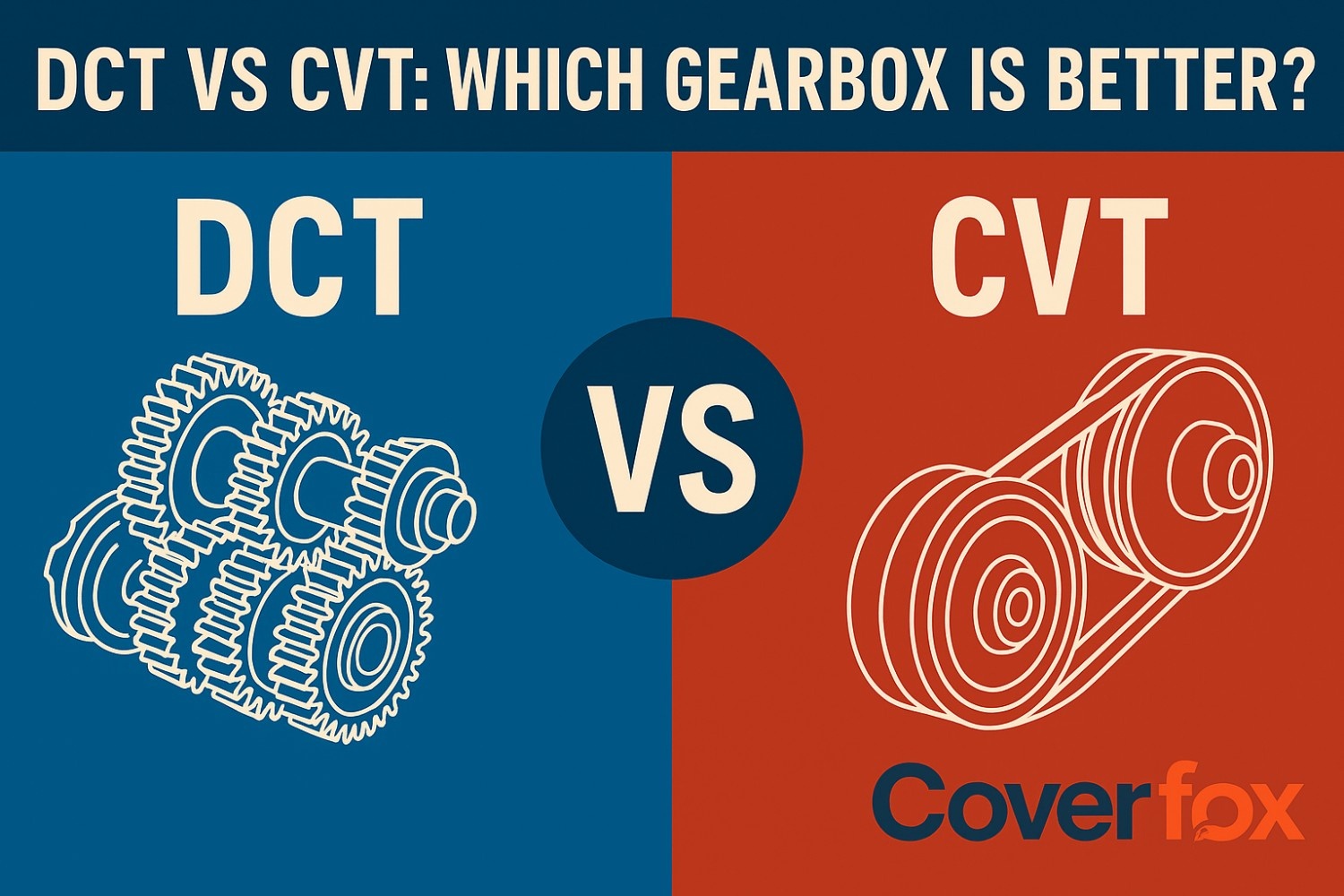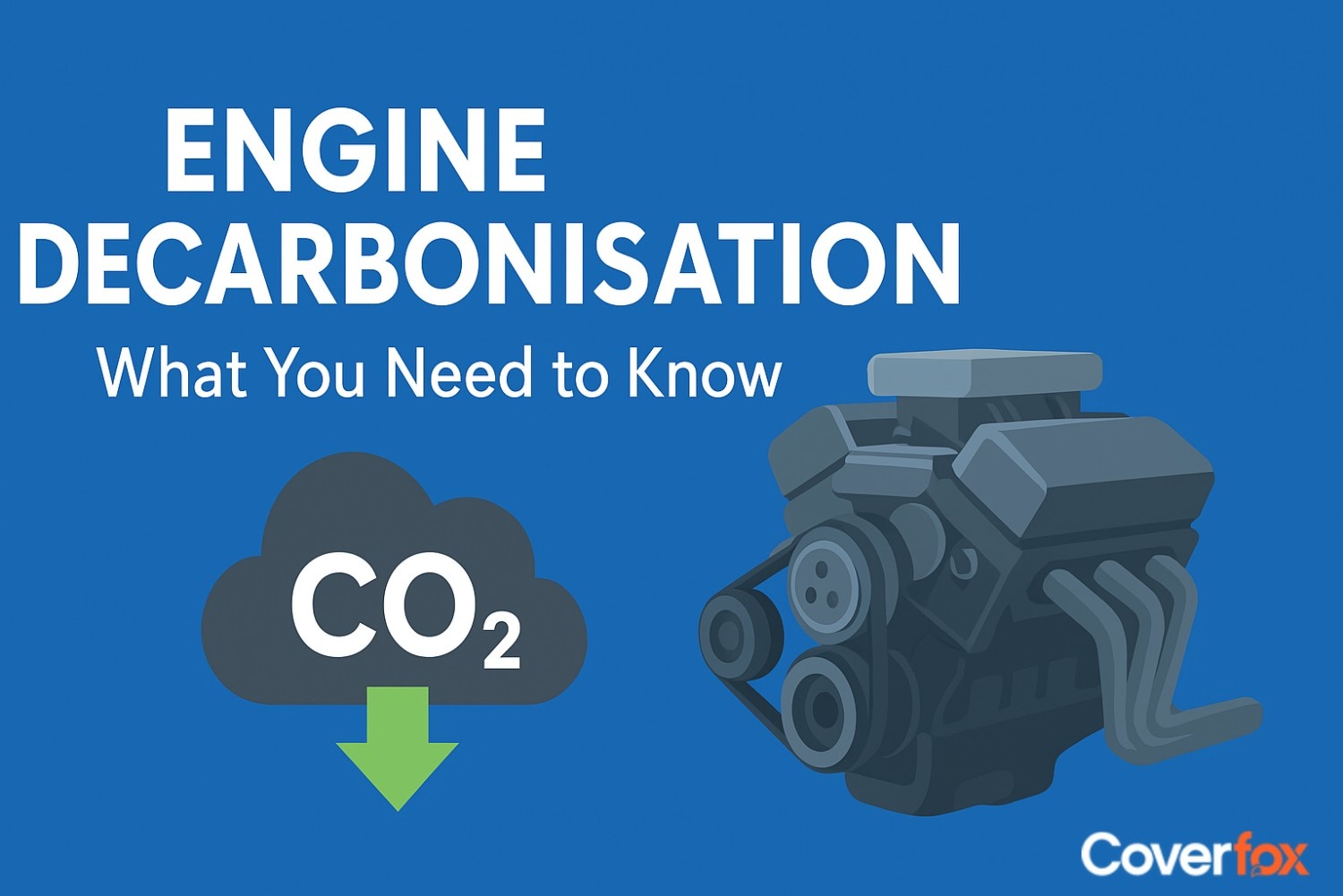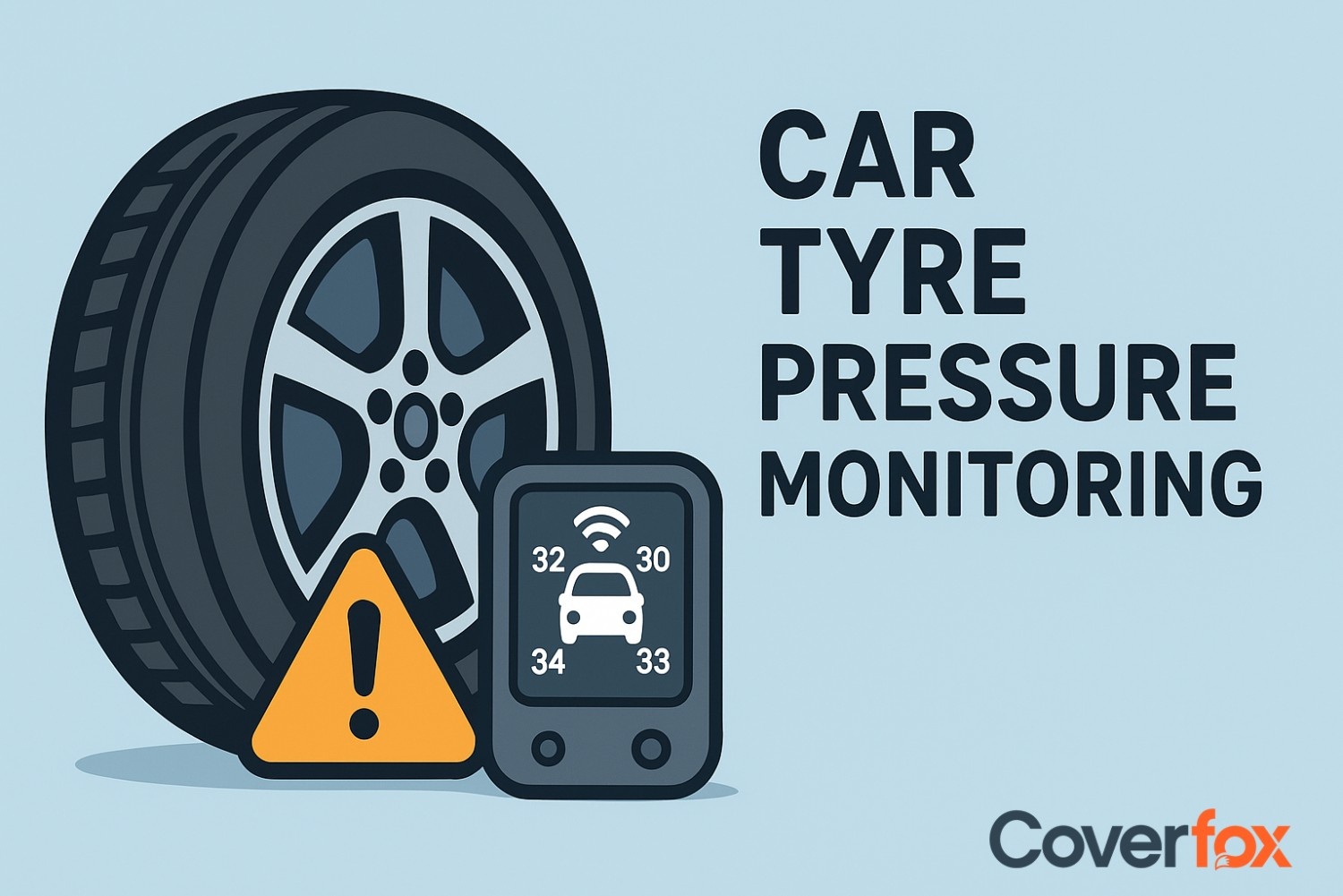The gearbox selection of your car can make or break your entire riding experience. In modern cars, this crucial aspect is available in the form of two types of transmission, namely, manual and automatic transmission. Under automatic transmission are two popular choices of transmission known as Dual-Clutch and Continuously Variable, or better yet, DCT and CVT transmissions.

But then the question arises, what is a dual-clutch transmission (DCT) or continuously-variable transmission (CVT) exactly, and which one is better suited for your driving needs?
Both offer their own unique set of benefits and drawbacks, and this article delves into the details of DCT vs CVT gearbox technology to help you make an informed choice, which can otherwise prove to be a real dilemma for many out there.
What is a Dual-Clutch Transmission (DCT) Gear Box?
Dual-Clutch (DCT) Transmission is the more advanced form of automatic transmission that incorporates two clutches for odd and even gears in a single housing. It ensures the perfect blend of efficiency and control of a manual gearbox with the convenience of an automatic transmission. Generally, this transmission type is used by high-performance cars, as it lets you switch gears in less time, delivering uninterrupted shifts and better fuel efficiency than traditional automatic gearboxes.
Working of DCT Gear Box
Here’s how it operates:
- A DCT has two clutches: one for odd gears and one for even gears.
- While you’re in one gear, the next gear is already ready on the other clutch.
- When it’s time to change gears, the DCT quickly switches clutches, changing gears without stopping power.
- This makes gear changes superfast and smooth.
What is Continuously-Variable Transmission (CVT)?
Continuously Variable (CVT) Transmission is an automatic gearbox that changes the gear ratio through the use of a belt and pulley system, ensuring a smooth riding experience. Without fixed gear ratios, it helps match engine rotation speed smoothly to wheel speed requirements. While this gearbox is ideal for daily commuting, it is not as responsive as a DCT gearbox, making it unsuitable for use in high-performance vehicles.
Working of CVT Gearbox
Here’s how it operates:
- The CVT has two pulleys connected by a belt: one from the engine and one to the wheels.
- These pulleys can change size smoothly, not in fixed steps.
- When the engine speeds up, the engine pulley gets smaller.
- At the same time, the wheel pulley gets bigger.
- This keeps the belt tight so it doesn't slip.
- Because of this, the car speeds up smoothly without jerky gear changes.
DCT vs CVT: How They Compare in Performance
Here’s everything you need to know about the DCT vs CVT Transmission in terms of various aspects:
| Aspect | DCT (Dual Clutch Transmission) | CVT (Continuously Variable Transmission) |
|---|---|---|
| Gearbox Capabilities and Driving Experience | Quick, sharp gear shifts with a sporty feel; manual mode available for control. | Smooth, continuous acceleration; manual mode is simulated. |
| Fuel Economy and Driving Responsiveness | Good fuel economy on highways; very responsive with fast shifts. | Better fuel efficiency in city driving; less responsive with slight lag. |
| Cost Considerations and Value for Money | Higher manufacturing and maintenance costs; suited for performance cars. | More affordable to buy and maintain; ideal for daily commuting. |
| Upkeep and Service Needs | Requires specialised maintenance; clutch wear can be costly. | Easier and cheaper to maintain; requires regular belt and pulley checks. |
DCT vs CVT: Which One is More Efficient?
Take a look at which proves to be the more efficient choice between DCT and CVT Transmission:
| Factor | DCT (Dual-Clutch Transmission) | CVT (Continuously Variable Transmission) |
|---|---|---|
| Fuel Mileage | Slightly lower mileage than CVT, but matches or beats CVT on highways with smooth shifts. | Better mileage in city and stop-and-go traffic by adjusting engine speed continuously. |
| Driving Feedback & Response | Very quick gear changes with sharp feedback; feels sporty and responsive. | Very smooth acceleration without gear shifts; can feel a bit slow or laggy sometimes. |
| Drivetrain Efficiency | Has more moving parts causing slightly more friction, but compensates with smooth gear changes. | Fewer parts mean less friction and better efficiency in stop-and-go driving. |
| Efficiency Approach | Keeps the engine running at best speed using close gear ratios and fast shifts. | Changes gear ratios constantly to keep the engine at the most fuel-efficient speed. |
List of Best DCT and CVT Cars in India in 2025
While looking for the best DCT and CVT Cars in India, check out these top models given below that could be a desirable choice for you to consider:
| Top DCT Cars | Price Range (Rs.) | Top CVT Cars | Price Range (Rs.) |
|---|---|---|---|
| Tata Altroz DCT | ₹6.89 - 11.49 Lakh | Honda City CVT | ₹11 - 15 Lakh approx. |
| Volkswagen Taigun | ₹17.36 - 19.83 Lakh | Maruti Suzuki Baleno CVT | ₹7.5 - 10 Lakh approx. |
| Skoda Kushaq DCT | ₹12 - 18 Lakh | Hyundai i20 CVT | ₹8 - 11 Lakh approx |
| Kia Seltos DCT | ₹14 - 20 Lakh | Toyota Glanza CVT | ₹7.8 - 10.5 Lakh approx |
| Hyundai Creta DCT | ₹11 - 20.3 Lakh | Honda Amaze CVT | ₹7.5 - 9.5 Lakh approx |
| Tata Curvv DCT | ₹9.99 - 19.52 Lakh | Maruti Suzuki Swift CVT | ₹6.5 - 10 Lakh approx |
| Hyundai Venue DCT | ₹7.94 - 13.53 Lakh | Hyundai Venue CVT | ₹8 - 12 Lakh approx |
| Skoda Slavia DCT | ₹13 - 17 Lakh | Toyota Urban Cruiser CVT | ₹10 - 14 Lakh approx |
Car Insurance: Coverage for Gearbox and Other Key Parts
Based on whether you own a DCT or CVT car, it is a must to safeguard your vehicle with a valid car insurance policy. This policy protects you financially against accidental repairs, third-party liabilities, damages arising due to theft, natural or manmade disasters and so on. It also provides essential coverage through add-ons for your vehicle components like the engine and gearbox, ensuring optimal performance for your vehicle.
However, you should know that your transmission type, between DCT vs CVT, also plays a role in affecting your car insurance premium. Here’s how:
| Aspect | DCT (Dual Clutch Transmission) | CVT (Continuously Variable Transmission) |
|---|---|---|
| Insurance Cost | Usually higher because DCT cars are seen as faster and riskier. | Usually lower since CVT cars are made for everyday driving and are less risky. |
| Repair Cost | Repairs are more complex and expensive, so claims cost more. | Repairs are simpler and cheaper, so claims cost less. |
| Driving Impact | Sporty and fast shifts may make insurers think the car is riskier. | Smooth and steady driving makes the car seem safer to insurers. |
Final Thoughts
Both DCT and CVT transmissions have their strengths—DCT is perfect for performance-focused drivers, while CVT excels in fuel efficiency and smoothness. The best choice depends on your driving style, vehicle type, and what you value most on the road.
Visit Coverfox, an IRDAI-authorised online platform that allows quick and hassle-free buying and renewal of car insurance plans, providing a convenient means to compare a wide range of policies from top insurers, all at once, in a single place.
Also Read:
Types of Car Transmissions: How Does it Work?
AMT (Automated Manual Transmission) in Cars: What It Is and How It Works
Manual vs. Automatic Transmission Cars
Frequently Asked Questions
How is a DCT transmission different from a traditional automatic gearbox?
A DCT gearbox makes use of two clutches to pre-select gears for quicker and uninterrupted shifts, while a conventional automatic gearbox uses a torque converter to transfer power between the engine and the wheels.
Can you manually change gears in a car with DCT or CVT transmission?
Yes, you can. With the help of paddle shifters or buttons on the steering wheel, certain Dual Clutch Transmission and Continuously Variable Transmission models allow manual modes.
Which DCT cars offer the most affordable pricing in India?
The most affordable DCT cars in India include models such as the Tata Altroz, Hyundai i20 N-line, Hyundai Venue and Tata Nexon.
Can both CVT and DCT transmissions be used in manual mode?
Both CVT and DCT models allow manual modes. However, DCT offers a more authentic manual shifting experience.
Does a DCT or CVT gearbox have higher manufacturing costs?
DCT gearboxes have higher manufacturing costs associated with them, due to complex components like a dual-clutch system.
What gearbox minimizes inertia losses for better efficiency?
DCT has lower inertia losses as compared to CVT and torque converters.
Is DCT transmission a reliable choice for Indian driving conditions?
Yes. DCT is steadily gaining popularity among those seeking performance and smooth, quick shifting. But there may still be certain concerns based on how they work in heat and traffic conditions.
Is CVT good for city driving?
Yes, a CVT gearbox can be considered optimal for city driving due to its smooth, fuel-efficient, and jerk-free performance, combined with lower emissions.
Why do some drivers prefer to avoid CVT transmissions?
In certain cases, owners have been found to be left disappointed due to reliability concerns and performance issues, as a CVT transmission is less responsive as compared to a DCT transmission.
What is the best way to drive a DCT transmission car on hilly roads?
To effectively and smoothly drive a DCT on hills, make sure to use manual mode for better control; avoid excessive clutch wear, and leverage engine braking to maintain stability. Make sure to gently accelerate to prevent overheating concerns.





